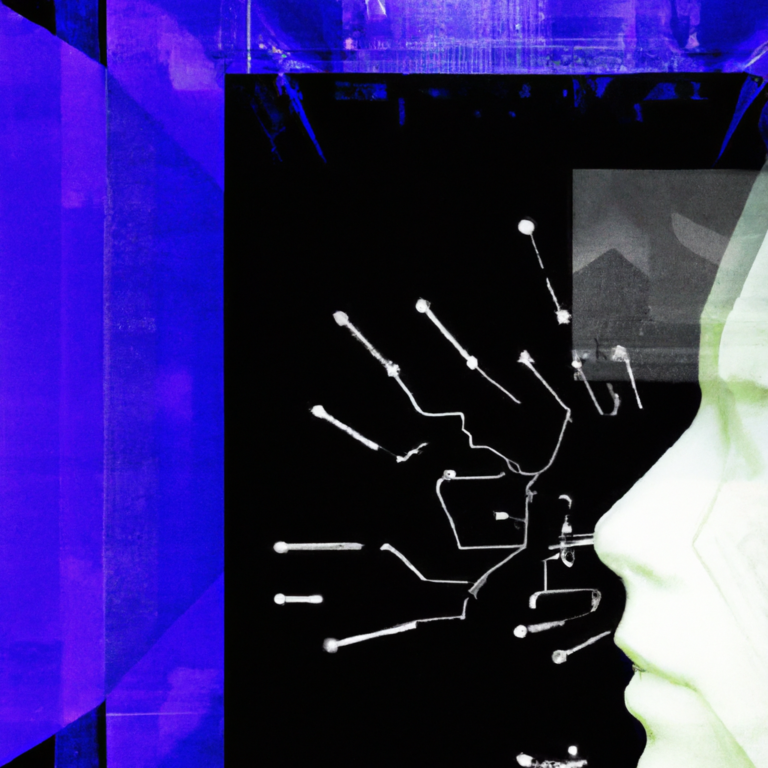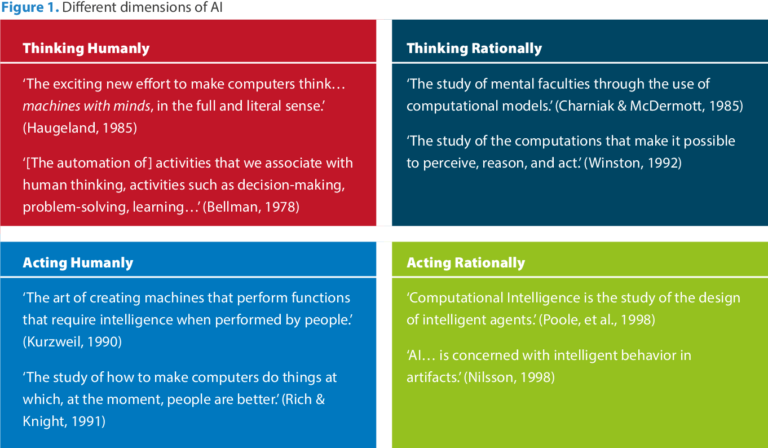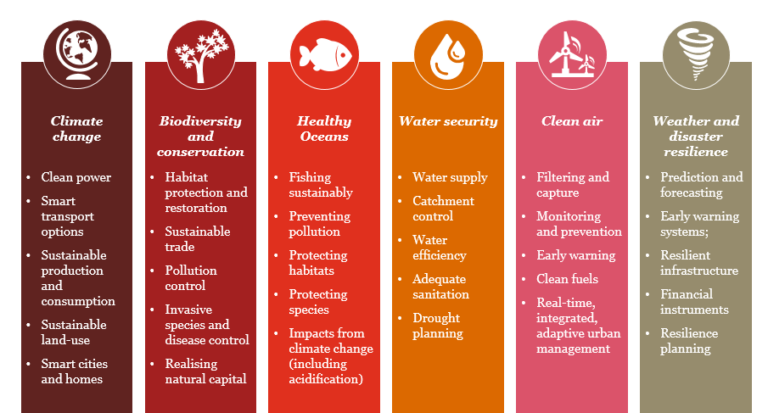The Future Of AI In The Workplace

Imagine a workplace where tasks are completed faster and with greater accuracy than ever before. Picture a future where AI is seamlessly integrated into everyday operations, revolutionizing the way we work. From automating mundane tasks to providing valuable insights and predictions, the possibilities seem endless. In this article, we explore the potential of AI in the workplace and how it is shaping the future of work as we know it. So buckle up, because the future is here, and it’s AI-powered!

Overview of AI in the Workplace
Artificial Intelligence (AI) is a branch of computer science that focuses on the development of intelligent machines capable of performing tasks that typically require human intelligence. In the workplace, AI refers to the integration of intelligent machines and software systems to streamline processes, improve decision-making, and enhance productivity.
Definition of AI
AI encompasses a broad range of technologies and applications. Machine learning, natural language processing, computer vision, and robotics are some of the core components of AI. Machine learning algorithms enable machines to learn from data and improve their performance over time, while natural language processing allows machines to understand and interpret human language. Computer vision enables machines to analyze and make sense of visual information, while robotics involves the use of robots to perform tasks autonomously.
Current Use of AI in the Workplace
AI is already being extensively used in the workplace across various industries. In customer service, chatbots and virtual assistants provide instant support and improve response times. In finance, AI algorithms assist in fraud detection, risk assessment, and portfolio management. In healthcare, AI is used for diagnosing diseases, analyzing medical images, and developing personalized treatment plans. AI is also used in manufacturing for quality control, predictive maintenance, and autonomous assembly.
Benefits of AI in the Workplace
AI offers numerous benefits in the workplace. One of the key advantages is increased efficiency and productivity. Intelligent algorithms and automation can perform tasks faster and with greater accuracy, reducing the time and effort required by employees. AI also enables organizations to make better decisions by analyzing vast amounts of data and identifying trends and patterns that humans may overlook. Additionally, AI can enhance workplace safety by automating hazardous tasks and reducing the risk of human error. By taking over repetitive and mundane tasks, AI allows employees to focus on more creative and meaningful work.
Challenges and Limitations of AI in the Workplace
While AI brings significant benefits, it is not without its challenges and limitations. Ethical concerns surrounding AI remain a prominent issue. The potential for biases in AI algorithms and the impact on privacy and data security raise ethical questions that need to be addressed. Another challenge is job displacement. As AI automation expands, certain job roles may become redundant, leading to layoffs and the need for reskilling and upskilling. However, it is crucial to note that AI also presents opportunities for new job roles and career paths. Another limitation of AI is the need for human-machine collaboration. While AI can perform certain tasks autonomously, the integration of human skills, empathy, and creativity is still essential for many aspects of work.
AI’s Impact on Different Industries
AI’s impact is felt across various industries, revolutionizing the way tasks and processes are carried out.
Healthcare
In the healthcare industry, AI has the potential to revolutionize patient care. AI-driven algorithms can analyze medical records, patient data, and research literature to provide accurate diagnoses and suggest treatment options. Medical imaging analysis using AI can detect abnormalities with high precision, increasing the speed and accuracy of diagnoses. AI-powered robots can assist in surgery, providing surgeons with enhanced precision and reducing risks.
Manufacturing
In the manufacturing sector, AI plays a crucial role in automation and optimizing production processes. AI algorithms monitor and analyze data from sensors, enabling predictive maintenance and reducing costly downtime. Robotics and automation technologies powered by AI can streamline assembly lines, improve production efficiency, and enhance quality control. AI also facilitates the development of smart factories where machines communicate and adapt to production demands, optimizing output and reducing waste.
Finance
AI has transformed the finance industry by enabling automated processes and intelligent decision-making. AI algorithms are employed in fraud detection systems, analyzing massive datasets to identify suspicious patterns and anomalies. AI-powered chatbots and virtual assistants provide customers with personalized financial advice and support. Additionally, AI algorithms can analyze market trends and patterns to optimize investment portfolios, improve risk assessment, and enhance trading strategies.
Customer Service
AI has revolutionized customer service by providing instant support and personalized experiences. Chatbots equipped with natural language processing abilities can interact with customers, addressing queries and providing solutions. Virtual assistants can understand complex customer requests, offering personalized recommendations based on individual preferences. Through AI, organizations can offer 24/7 customer support, improving customer satisfaction and reducing response times.
Education
AI is transforming the education landscape by providing personalized learning experiences for students. Adaptive learning platforms powered by AI can analyze students’ strengths and weaknesses, tailoring educational content and activities to their individual needs. Virtual reality and simulation technologies enable immersive and interactive learning experiences. AI-based tutoring systems offer personalized guidance, supporting students in their learning journey. AI also improves administrative tasks, automating grading and assessment processes.
AI and Automation
One of the significant benefits of AI in the workplace is the automation of routine tasks. Repetitive and mundane tasks that do not require human creativity or decision-making can be delegated to intelligent machines. This automation frees up employees’ time, allowing them to focus on tasks that require human skills and ingenuity. Additionally, AI-powered automation increases efficiency and accuracy by reducing errors and enabling tasks to be completed faster.
Increased Efficiency and Accuracy
AI automation significantly improves efficiency and accuracy in the workplace. Machines equipped with AI algorithms can process information and perform tasks at a much faster rate than humans, resulting in increased productivity. AI-powered automation also reduces the likelihood of human errors, ensuring consistent and accurate results. This increased efficiency and accuracy contribute to better outcomes, reduced operational costs, and improved customer satisfaction.
Creation of New Job Roles
While AI automation may lead to job displacement in certain areas, it also creates new job roles. With the introduction of AI, there is a growing demand for professionals who can develop, implement, and maintain AI technologies. This includes data scientists, AI engineers, and machine learning experts. Additionally, as AI takes over routine tasks, employees have the opportunity to upskill and reskill, transitioning into new roles that require human qualities such as creativity, critical thinking, and emotional intelligence. The creation of new job roles enables individuals and organizations to leverage the benefits of AI while adapting to the changing work landscape.
AI and Data Analytics
AI has revolutionized data analytics, enabling organizations to make better decisions based on insights derived from vast amounts of data.
Improved Decision-Making
AI algorithms can analyze large datasets and identify patterns and trends that humans may miss. This enables organizations to make data-driven decisions and predictions with higher accuracy. AI-powered analytics tools can process structured and unstructured data, providing valuable insights that inform strategic planning, resource allocation, and risk management. AI’s ability to process and interpret data at scale enhances decision-making processes, leading to better outcomes and improved business performance.
Predictive Analytics
Predictive analytics is an application of AI that uses historical data and machine learning algorithms to identify future trends and outcomes. By analyzing patterns and correlations, predictive analytics can forecast future events, allowing organizations to proactively respond and make informed decisions. In finance, predictive analytics can identify potential fraudulent activities, while in manufacturing, it can optimize production processes by predicting maintenance needs and demand patterns. Predictive analytics enables organizations to anticipate customer needs, optimize operations, and mitigate risks.
Data Security and Privacy
The use of AI in data analytics raises concerns about data security and privacy. Organizations must ensure that the data they collect, process, and analyze remains secure and protected. AI algorithms must adhere to privacy regulations and ethical guidelines to prevent unauthorized access or use of data. Additionally, organizations should implement robust data security measures to safeguard sensitive information. This includes encryption, access controls, and regular vulnerability assessments. Responsible and ethical AI practices are crucial to maintain trust among employees, customers, and stakeholders.
AI and Employee Training
AI has transformed employee training by providing personalized and immersive learning experiences.
Personalized Learning Experiences
AI-powered learning platforms can tailor training materials and activities to individual employees’ needs. Adaptive learning algorithms analyze employee performance and learning preferences, offering customized content that helps them acquire new skills and knowledge effectively. Personalized learning experiences improve engagement, motivation, and retention, enabling employees to upskill and reskill at their own pace. This personalized approach to training enhances the overall learning experience and promotes continuous professional development.

Virtual Reality and Simulations
AI and virtual reality technologies combine to create immersive training experiences. Virtual reality simulations allow employees to practice real-world scenarios in a safe and controlled environment. AI algorithms analyze employee performance within these simulations, providing feedback and guidance for improvement. Virtual reality and simulations enhance learning retention and application of knowledge, particularly for complex tasks that require hands-on experience. The integration of AI and virtual reality in employee training offers a cost-effective and efficient way to develop skills and competencies.
Upskilling and Reskilling
AI automation may lead to changes in job roles and skill requirements. To adapt to these changes, organizations need to invest in upskilling and reskilling programs for their employees. AI can play a significant role in these programs by providing personalized learning paths and resources. Employees can acquire new knowledge and skills relevant to emerging roles and technologies through AI-powered training platforms. Upskilling and reskilling programs ensure that employees remain competitive and valuable in the evolving workplace, promoting career growth and organizational success.
AI and Workplace Communication
AI has transformed workplace communication by introducing chatbots, virtual assistants, and natural language processing technologies.
Chatbots and Virtual Assistants
Chatbots and virtual assistants are AI-powered tools that interact with employees and customers, providing instant support and information. These intelligent virtual agents can address common queries, automate routine tasks, and offer personalized recommendations. Chatbots equipped with natural language processing capabilities can understand and respond to human language, making interactions more conversational and efficient. Chatbots and virtual assistants enhance workplace communication by providing timely and accurate information, reducing wait times, and improving overall customer and employee satisfaction.
Natural Language Processing
Natural language processing (NLP) is a branch of AI that enables machines to understand and interpret human language. NLP algorithms analyze text and speech, extracting meaning and intent. In the workplace, NLP technologies facilitate communication by enabling machines to understand and respond to employee queries, instructions, and feedback. NLP-powered systems can perform tasks such as language translation, summarization, sentiment analysis, and speech recognition. By enhancing the ability of machines to understand and interpret human language, NLP improves communication efficiency and effectiveness.
Enhanced Collaboration
AI technologies promote collaboration and knowledge sharing among employees. Intelligent collaboration platforms powered by AI enable real-time communication, document sharing, and project management. These platforms facilitate team collaboration by providing a centralized space for employees to work together, regardless of geographical locations. AI algorithms can analyze and organize information, making it easier for employees to find relevant documents, resources, and expertise. Enhanced collaboration leads to increased productivity, innovation, and employee engagement.
AI and Workforce Management
AI has transformed workforce management practices, streamlining recruitment and hiring processes, enhancing performance monitoring, and optimizing workforce planning.
Recruitment and Hiring
AI algorithms can analyze large volumes of candidate data, including resumes, applications, social media profiles, and interviews. This enables recruiters to identify the most qualified candidates efficiently and make data-driven hiring decisions. AI-powered tools can also conduct initial screening, reducing time and effort in the recruitment process. Automation of repetitive administrative tasks allows recruiters to focus on building relationships with candidates and assessing important soft skills. AI in recruitment and hiring improves efficiency, reduces bias, and enhances the quality of hires.
Performance Monitoring
AI-powered performance monitoring systems enable organizations to track employee performance accurately. These systems use data analytics and machine learning to evaluate individual and team performance, identifying strengths, weaknesses, and areas for improvement. AI algorithms can analyze various performance metrics, including productivity, quality, and customer feedback. Performance monitoring systems provide real-time insights, enabling managers to offer timely feedback, coaching, and recognition. By automating performance monitoring, organizations can foster a culture of continuous improvement and optimize employee performance.
Workforce Planning
AI supports effective workforce planning by providing data-driven insights on workforce demand, skills gaps, and talent acquisition strategies. AI algorithms analyze historical data and industry trends to forecast future workforce needs. This enables organizations to develop proactive strategies for recruitment, training, and development. AI-powered workforce planning tools can assess employee skills, identify skill gaps, and recommend upskilling or reskilling programs. By using AI in workforce planning, organizations can align their workforce strategies with business goals, anticipate talent requirements, and maximize employee potential.
AI and Customer Experience
AI plays a significant role in enhancing the customer experience by providing personalized recommendations, chatbot support, and voice assistants for self-service.
Personalized Recommendations
AI algorithms can analyze customer data, including purchase history, preferences, and browsing behavior, to provide personalized product recommendations. These recommendations can be delivered through chatbots, apps, or websites, creating a tailored shopping experience for each customer. Personalized recommendations enhance customer satisfaction, increase sales, and foster customer loyalty.
Chatbots for Customer Support
Chatbots equipped with natural language processing abilities provide instant customer support and address queries efficiently. Customers can interact with chatbots in a conversational manner, receiving immediate assistance and solutions. Chatbots can handle common customer inquiries, provide account information, and even process simple transactions. By automating customer support, organizations can offer 24/7 assistance, reduce response times, and improve overall customer satisfaction.
Voice Assistants for Self-Service
Voice assistants like Amazon Alexa and Google Assistant enable customers to perform self-service tasks using voice commands. Customers can use voice assistants to place orders, check product availability, and obtain information. Voice assistants use AI algorithms and natural language processing to understand and respond to customer requests accurately. The convenience and ease of use provided by voice assistants enhance the customer experience, enable faster problem resolution, and reduce the need for human intervention.
AI and Workplace Culture
Integrating AI in the workplace requires a thoughtful approach to embrace change, address employee concerns, and strike a balance between automation and the human touch.
Embracing Change and Adaptability
The successful integration of AI in the workplace requires organizations to embrace change and foster a culture of adaptability. Employees need to understand the benefits of AI and be open to learning new skills and working alongside intelligent machines. Organizations should provide training programs and resources that prepare employees for the changing work landscape. Embracing change and adaptability ensure that employees and organizations can thrive in an AI-driven workplace.
Addressing Employee Concerns
The introduction of AI may raise concerns among employees regarding job security and skill relevance. It is essential for organizations to address these concerns openly and transparently. Communication and dialogue are crucial for building trust and alleviating fears. Organizations can provide opportunities for employees to participate in decision-making processes related to AI implementation and offer support in upskilling and reskilling. By addressing employee concerns and providing reassurance, organizations can create a supportive environment during the transition to an AI-powered workplace.
Balancing Automation and Human Touch
While AI automation brings efficiency and productivity, it is crucial to strike a balance between automation and the human touch. Certain tasks and interactions require human skills, empathy, and creativity that machines cannot replicate. Organizations should identify areas where human involvement is essential, ensuring that employees are engaged in meaningful work that utilizes their unique qualities. Balancing automation and the human touch fosters a work environment that values both efficiency and human connection, leading to higher job satisfaction and better customer experiences.
In conclusion, AI is revolutionizing the workplace across various industries, offering numerous benefits from increased efficiency and accuracy to enhanced decision-making and improved customer experiences. However, challenges and limitations exist, including ethical concerns, job displacement, and the need for human-machine collaboration. By understanding and addressing these challenges, organizations can leverage AI’s potential for transformation while ensuring a positive impact on employees and workplace culture. Embracing AI in the workplace requires strategic planning, investment in employee training, and a thoughtful approach to balance automation and the human touch. With proper implementation, AI has the potential to shape the future of work, driving innovation and enabling organizations to thrive in a rapidly changing world.






